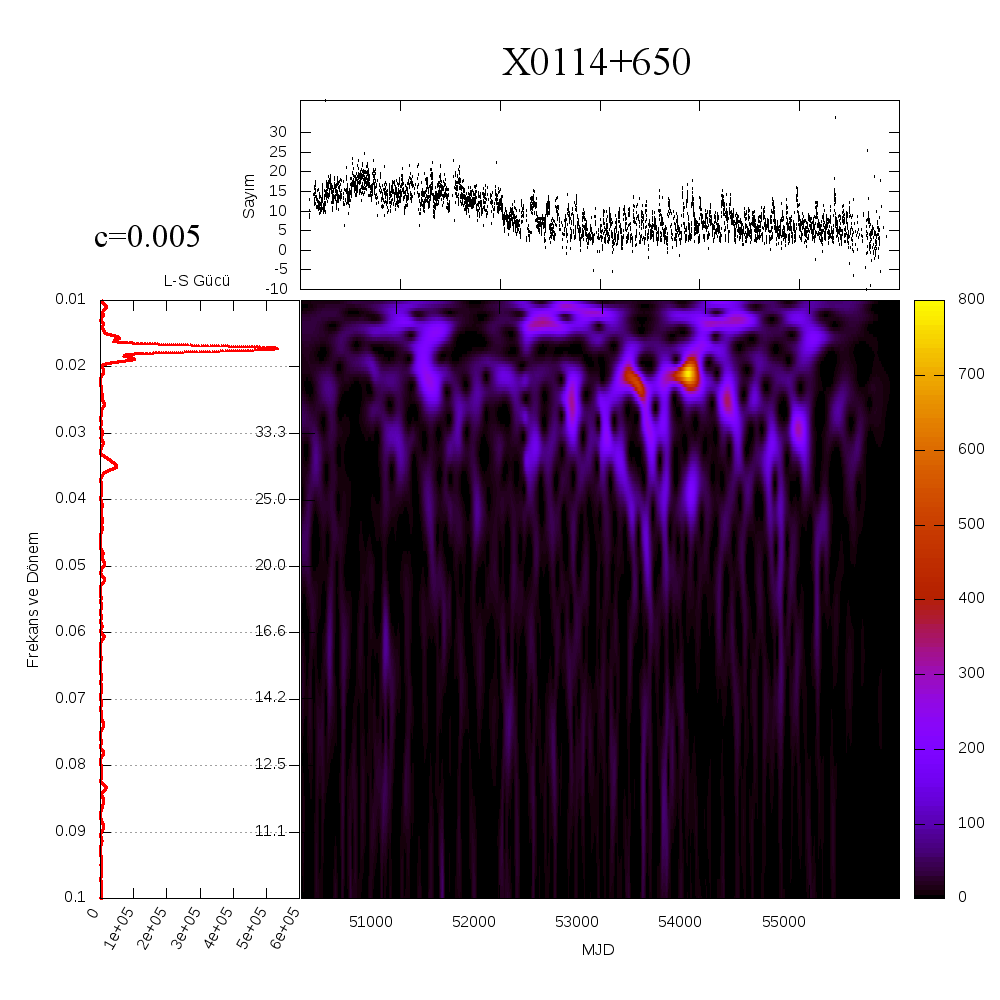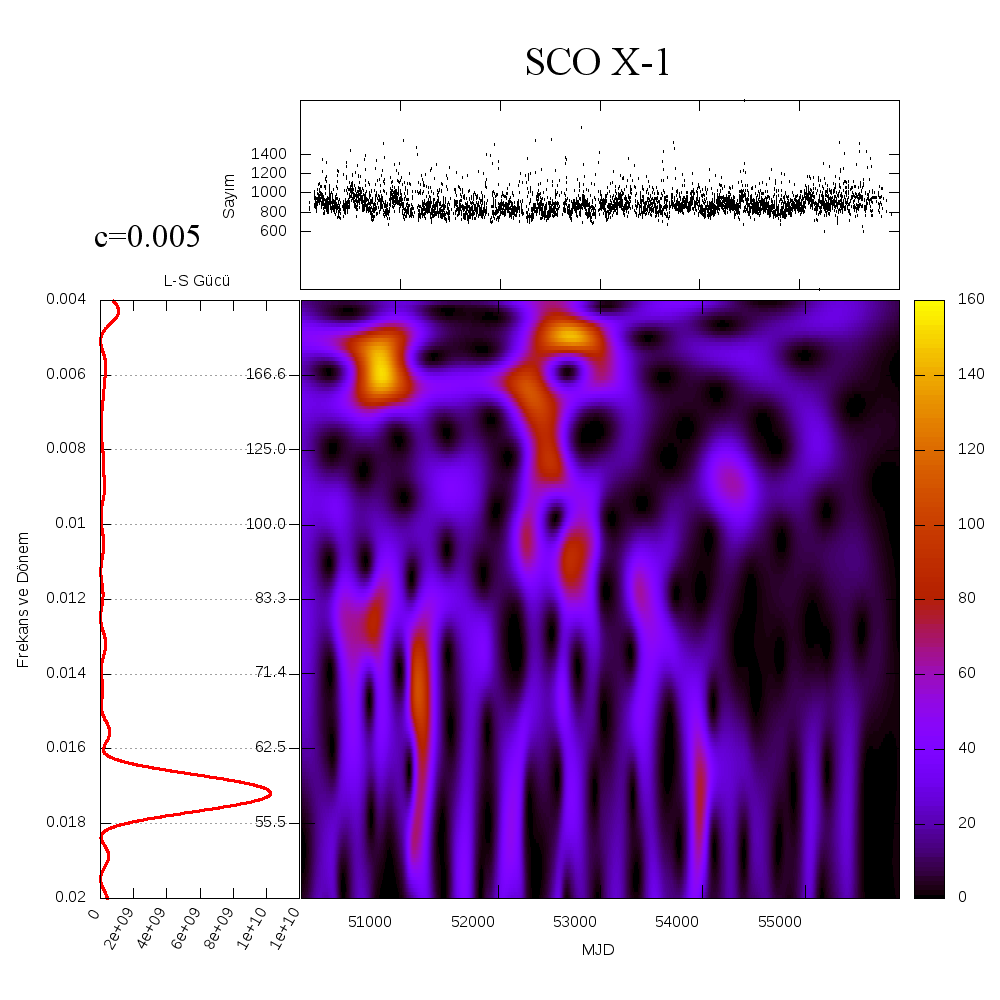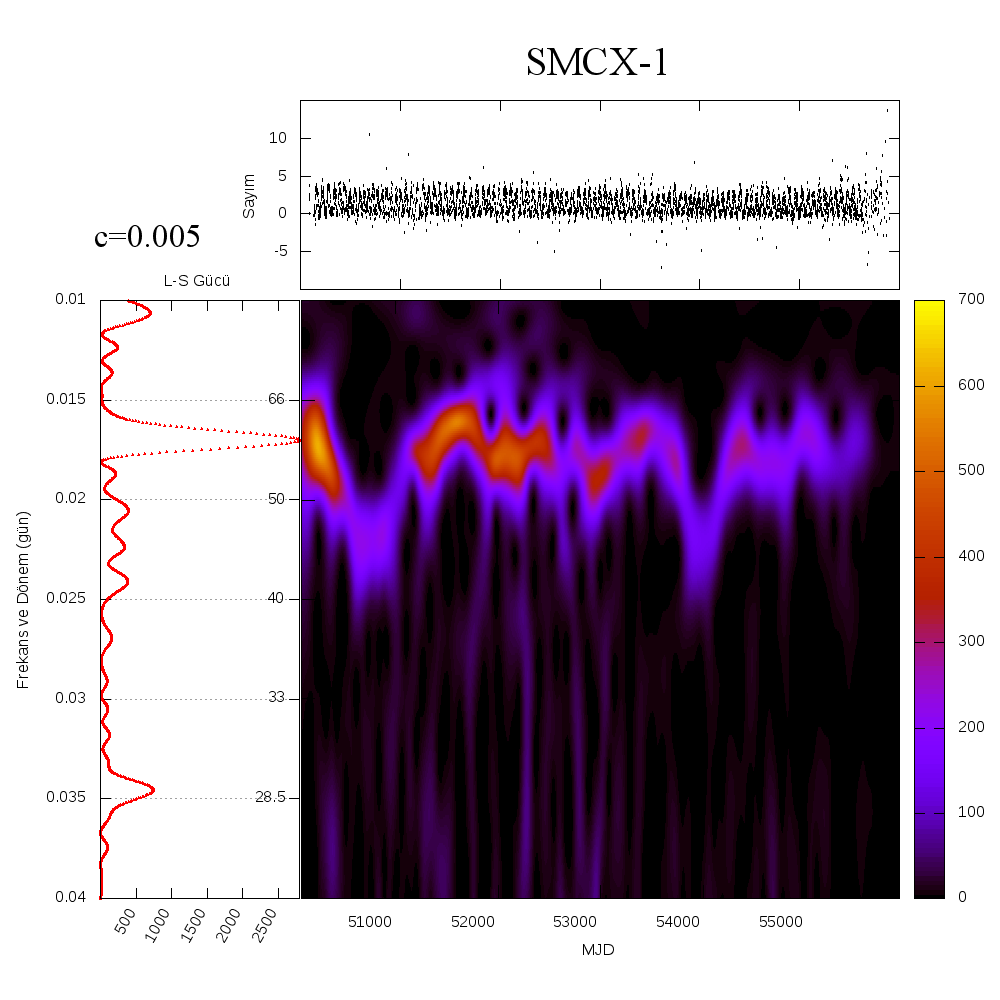This is a Python code for timeseries analysis using WWZ transformations. It uses Foster's abbreviated Morlet Wavelet to analyse timeseries using a WWZ (Weighted Wavelet-Z) transform. (Foster, G., 1996, http://adsabs.harvard.edu/full/1996AJ....112.1709F)
The algoritm is mostly translated from Templeton's Fortran code (Templeton, M., 2004, http://adsabs.harvard.edu/full/2004JAVSO..32...41T).
Details of the mathematics, coding and fundamental time series analysis (especially in astronomy) is available in my thesis (Turkish): http://eayd.in/msc
You can cite this code with its DOI and citing my thesis:
Aydin, M. E., 2017. eaydin/WWZ: v1.0.0, Zenodo, http://doi.org/10.5281/zenodo.375648
Aydin, M. E., 2014, Dynamic Power Spectra On The Basis Of Wavelet Transform, M.S. Thesis, Ankara University
It can either be used as a module import in another Python script or used as a standalone program. It supports paralellization, yet only in standalone mode.
Dependencies: Python 2.6+ (not Python 3 ready) and NumPy
There is also a Lomb-Scargle script in the repo for ease of use and comparison.
usage: wwz.py [-h] -f FILE -o OUTPUT -l FREQ_LOW -hi FREQ_HIGH -d FREQ_STEP -c
DCON [-g] [-m] [-t TIME_DIVISIONS] [--time] [--no-headers]
[-p PARALLEL]
Input arguments can be read from a file. The file descriptor
prefix is '@'.
In order to read argument from a file named args.txt,
the argument @args.txt should be passed.
An example for args.txt:
-f=myinputfile.txt
-o=theoutputfile.output
-m
--freq-step=0.001
-l=0.001
-hi=0.01
-c=0.001
-p=0
You can pass arguments from file and commandline at the same time.
If two same arguments passed by this method, the latter will be
used. So if you want to override some arguments in a an argument
file, specify the file first.
An example usage for our earlier @args.txt is as:
python wwz.py @args.txt -c=0.0125
The above command will use the settings in args.txt but will
use c=0.0125 instead of c=0.001
Comments and blank lines are NOT allowed in argument files.
Import this script via Python to use it as a module, rather than
a standalone script. (import wwz)
optional arguments:
-h, --help show this help message and exit
-f FILE, --file FILE the Input File, Raw Lightcurve
-o OUTPUT, --output OUTPUT
the Output File Name
-l FREQ_LOW, --freq-low FREQ_LOW
the Low Frequency Value
-hi FREQ_HIGH, --freq-high FREQ_HIGH
the High Frequency Value
-d FREQ_STEP, --freq-step FREQ_STEP
the dF value, incremental step for Frequency
-c DCON, --dcon DCON the C constant for the Window Function
-g, --gnuplot-compatible
the Output file is GNUPlot compatible, which means the
tau's will be grouped so that pm3d can easily map.
Default value is 'False'.
-m, --max-periods Creates a secondary output with the maximum Periods
for each single tau. This can be drawn in 2D. The
output filename is derived from the -o option, added
'max_periods'. Default value is 'False'.
-t TIME_DIVISIONS, --time-divisions TIME_DIVISIONS
The Time Divisions value. Templeton assumes this as
50. VStars from AAVSO leaves this optional contrary to
Templeton, yet it's default value is also 50.
--time Calculate the time of operation in seconds and print
to standard output.
--no-headers Doesn't print headers to output files if set. Default
is 'False'.
-p PARALLEL, --parallel PARALLEL
Created threads to speed up the process. Default value
is '1', which means single thread. '0' means number of
detected CPUs, can be overridden.
Below is an example of the X-Ray source (observed by the RXTE Satellite) with data, Lomb-Scargle and WWZ output.
The example below shows the main advantage of WWZ over LS. There is periodicity that LS failed to detect, with a period of about 166 days. Also note the change in frequency.
The SMCX-1 graph below shows how peak frequency detected by LS can be misleading, since that frequency value actually changes (very low at 51500 and 54500 MJD) and the alias of the detected LS peak (at around 29 days period) is not detected by the WWZ algorithm (which is a good thing).


